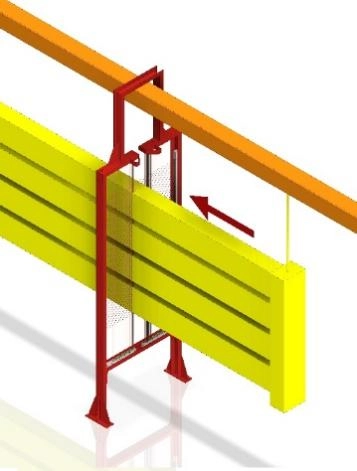Content Menu
● Understanding Integrated Control Systems vs. Standalone Solutions
>> What Are Standalone Control Systems?
>> What Are Integrated Control Systems?
● Key Advantages of Integrated Control Systems
>> Increased Efficiency and Productivity
>> Enhanced Real-Time Monitoring and Control
>> Improved Data Accuracy and Decision-Making
>> Scalability and Standardization
>> Enhanced Safety and Sustainability
>> Reduced Downtime and Maintenance Costs
>> Better Collaboration and Communication
● Practical Examples of Integrated Control System Benefits
>> Industrial Automation
>> Building Management
>> Data Centers
● Challenges and Considerations
● Conclusion
● Related Questions and Answers
● Citations:
Integrated control systems have become increasingly prevalent in industrial, manufacturing, and building management environments. Unlike standalone solutions, which operate independently, integrated control systems unify multiple control functions and data streams into a single cohesive platform. This article explores the numerous advantages that integrated control systems offer over standalone solutions, highlighting their impact on efficiency, safety, scalability, and overall operational excellence.

Understanding Integrated Control Systems vs. Standalone Solutions
What Are Standalone Control Systems?
Standalone control systems are individual units or devices designed to perform specific control functions independently. They often operate in isolation without direct communication or data sharing with other systems. Examples include a single HVAC controller, a dedicated motor controller, or a separate safety shutdown system.
What Are Integrated Control Systems?
Integrated control systems combine various control functions-such as process automation, safety management, energy monitoring, and equipment control-into a unified platform. This integration enables seamless communication and coordination among different components, providing a holistic view and control of the entire operation.
Key Advantages of Integrated Control Systems
Increased Efficiency and Productivity
One of the primary benefits of integrated control systems is the significant boost in efficiency and productivity. By consolidating control functions, these systems provide real-time data and advanced control algorithms that automate processes more effectively. This automation reduces manual interventions and repetitive tasks, allowing personnel to focus on higher-value activities. Additionally, integrated systems optimize equipment usage, leading to improved overall equipment effectiveness and lower operational costs.
Enhanced Real-Time Monitoring and Control
Integrated systems offer superior real-time monitoring capabilities compared to standalone solutions. Operators gain access to comprehensive dashboards with high-fidelity graphics and visualization tools that display process statuses and performance metrics in real time. This visibility allows for quick identification of bottlenecks or issues, enabling prompt corrective actions that minimize downtime and maintain continuous operations.
Improved Data Accuracy and Decision-Making
Data silos are a common problem with standalone systems, where information is fragmented across different platforms. Integrated control systems eliminate these silos by enabling seamless data sharing across all components. This integration ensures data consistency and accuracy, which is critical for informed decision-making. With consolidated data, organizations can perform advanced analytics, predictive maintenance, and optimize operations based on comprehensive insights.
Scalability and Standardization
Integrated control platforms are designed with scalability in mind. They provide standardized hardware and software configurations that can easily accommodate expansion as operational needs grow. The “configure-once” philosophy allows reuse of application templates and uniform settings across multiple units, significantly reducing design time and implementation costs. This standardization also simplifies maintenance and training, as personnel work within a consistent system environment.
Enhanced Safety and Sustainability
Safety is paramount in industrial and manufacturing settings. Integrated control systems incorporate advanced safety features such as automated safety shut-off protocols and real-time fault detection. These capabilities reduce the risk of accidents and environmental harm by enabling faster responses to hazardous conditions. Moreover, integrated systems facilitate energy management by monitoring utilities like water, air, gas, electricity, and steam collectively. This holistic approach helps optimize resource usage, reduce carbon emissions, and support sustainability goals.
Reduced Downtime and Maintenance Costs
Unexpected downtime can be costly. Integrated control systems improve reliability by enabling predictive maintenance through continuous monitoring and data analysis. By detecting equipment wear or faults early, maintenance can be scheduled proactively during off-peak hours, minimizing disruptions. Additionally, integrated systems reduce the complexity of troubleshooting by providing a unified platform to diagnose issues across multiple subsystems.
Better Collaboration and Communication
When control systems operate in isolation, communication barriers arise between departments and stakeholders. Integrated control systems foster better collaboration by providing a shared information platform accessible to all relevant parties. This transparency promotes teamwork, faster problem-solving, and alignment of operational objectives across the organization.
Practical Examples of Integrated Control System Benefits
Industrial Automation
In industrial operations, integrated distributed control systems have proven essential for improving process automation. They enable real-time data collection and advanced control algorithms that optimize production lines, reduce waste, and enhance product quality. Operators benefit from intuitive dashboards that simplify monitoring and control, leading to fewer errors and higher throughput.
Building Management
Integrated control systems in building management unify HVAC, lighting, security, and energy management controls. This integration allows for centralized control and monitoring, resulting in energy savings, improved occupant comfort, and enhanced security. Automated scheduling and sensor-based adjustments reduce energy consumption while maintaining optimal environmental conditions.
Data Centers
Data centers rely on integrated thermal control systems to manage cooling units efficiently. Integrated controls reduce installation complexity and costs by using pre-configured settings and auto sensor detection. They also provide real-time alerts and self-healing routines that prevent downtime and extend equipment runtime, ensuring continuous operation of critical infrastructure.
Challenges and Considerations
While integrated control systems offer many benefits, organizations must consider factors such as initial investment costs, system complexity, and the need for skilled personnel to manage and maintain the integrated platform. Proper planning, vendor selection, and training are essential to maximize the advantages of integration.
Conclusion
Integrated control systems provide a transformative approach to managing complex industrial and commercial operations. Their advantages over standalone solutions include increased efficiency, real-time monitoring, improved data accuracy, scalability, enhanced safety, and reduced downtime. By unifying disparate control functions into a cohesive platform, integrated systems empower organizations to optimize performance, reduce costs, and achieve sustainability goals.
---
Related Questions and Answers
Q1: How do integrated control systems improve operational efficiency?
A1: They automate repetitive tasks, reduce manual interventions, and provide real-time data for optimized process control, leading to increased productivity and lower operational costs.
Q2: What role does scalability play in integrated control systems?
A2: Scalability allows the system to grow with operational needs, supporting infrastructure expansion and standardizing configurations to simplify deployment and maintenance.
Q3: How do integrated control systems enhance safety?
A3: They incorporate automated safety features and real-time fault detection that reduce human error and enable quick responses to hazardous conditions.
Q4: Can integrated control systems reduce downtime?
A4: Yes, through predictive maintenance and real-time monitoring, integrated systems help schedule maintenance proactively and prevent unexpected equipment failures.
Q5: What industries benefit most from integrated control systems?
A5: Industries such as manufacturing, industrial automation, building management, and data centers benefit significantly due to the complexity and critical nature of their operations.

---
Citations:
[1] https://blog.se.com/industry/2023/10/18/4-reasons-a-single-integrated-distributed-control-system-is-key-for-industrial-operations/
[2] https://www.netsuite.com/portal/resource/articles/erp/benefits-system-integration.shtml
[3] https://abodeenergy.com/evaluating-integrated-control-systems/
[4] https://www.concur.com/blog/article/what-is-system-integration-and-what-are-its-advantages
[5] https://integratedcontrolsolutions.webnode.page/l/key-benefits-of-integrated-control-systems/
[6] https://quadplus.com/benefits-of-seamless-control-systems-integration/
[7] https://blog.csdn.net/weixin_34401008/article/details/117943281
[8] https://www.vertiv.com/48f89d/globalassets/shared/advantages-of-using-integrated-thermal-controls-versus-third-party-controls.pdf
[9] https://www.ee.cityu.edu.hk/~gchen/pdf/Writing.pdf
[10] https://resources.impactfireservices.com/integrated-access-control
---
Hot Tags: China, Global, OEM, private label, manufacturers, factory, suppliers, manufacturing company










































 .
. 